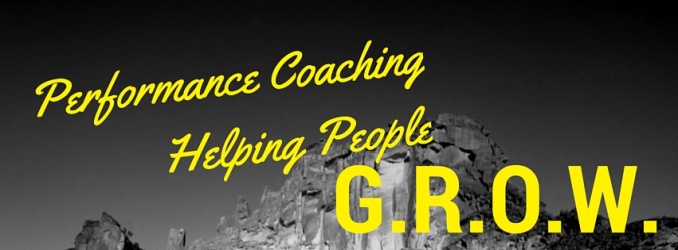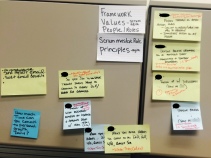
A Few weeks ago while attending a Coaching Agile Teams class I heard one of the instructors (Lyssa Adkins) make a reference in passing to “signal to noise” ratio in reference to our ability to communicate with others. Her comment intrigued me because I’d never heard that phrase before, so I started to do some investigation.
Signal-to-noise ratio (abbreviated SNR or S/N) is a measure used in science and engineering that compares the level of a desired signal to the level of background noise.
Signal-to-noise ratio is defined as the ratio of the power of a signal (meaningful information) and the power of background noise (unwanted signal):
SNR = Power of the Signal / Power of the Noise
The higher the SNR the less noise is in the conversation. For example, a conversation that had 15 sentences on topic (signal) and 3 sentences off topic (noise) would have a SNR score of 5. But, a conversation that had 15 sentences on topic (signal) and 23 sentences off topic (noise) would have an SNR score of .65 and would more than likely be a less clear and effective conversation.
Signal-to-noise ratios in conversations often go down when people feel the need to qualify their comments with explanations. These explanations, while intended to convey clarity around the message, often lead to confusion because they make conversations harder to follow.
Another signal-to-noise ratio killer happens when people attempt to clarify questions by stacking other explanatory questions on top rather than just letting the question stand on its own merit. Questions become less powerful when the listener has to sort through multiple questions and determine which one to answer. The reason people stack questions is driven by a fear that their original question was not clear or that it needed to be justified. It is better to just ask one question and trust that if the listener needs the question clarified, they will ask for clarification.
One skill that coaches use to combat the signal-to-noise ratio is bottom-lining. Bottom lining is when you strip all the extra words out of conversations, sentences, and questions and speak to the essence of the message you want to convey. Bottom lining uses fewer words and creates a higher signal to (lower) noise ratio. Because there is less noise in the conversation it is easier to follow and remain engaged. It is proven that the most effective questions generally contain 3-7 words; so, asking questions in this bottom line manner the questions actually become clearer and easier to answer and thus, more powerful.
One exercise you might try while learning this skill is to tell a story in 1 minute. This exercise helps you learn to sort through all of the details you could tell and forces you to speak to the essence of the story with only the most important information.
Another way you can practice this skill is to review emails and other written correspondence before sending them and determine how many words you can pull out by rephrasing. What information is not really important to the main point of the message you are trying to send? Can you bottom line the information into 3-4 bullet points?
I encourage you to practice this skill and pay attention to the difference it makes in your conversations. Notice if some of your monologues start shifting to dialogues. Keep in touch and let me know what you learned through the experience.


 hey are weak. We also talk about where they would like to see themselves in a few months and in a year.
hey are weak. We also talk about where they would like to see themselves in a few months and in a year.